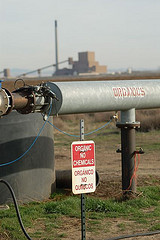Calcium Deficiency in California Organic Agriculture
Calcium is one particular of the most crucial plant nutrients. It is essential for constructing a robust cell membrane structure, and plays critical roles in Nitrogen metabolism, protein formation and Potassium uptake. Calcium deficiencies are typically noted in the growth zones such as new top and root growth, and at the bottom end of fruits. Blossom End Rot (BER) in peppers and tomatoes is an outstanding example of how weakened cell membranes minimize fruit good quality and economic overall performance.
Although the information is there, it is surprising how uninformed we are about Calcium nutrition. Though we have a practical understanding of its role as a soil amendment, eliminating Calcium deficiency in California agriculture can be challenging. Supplying the crop’s require for Calcium is not as simple as calculating the soil’s lime requirements. Nutrient availability is dependent upon a lot of aspects beyond total supply such as pH, C.E.C., cation saturation on the CEC, water availability and good quality to name a couple of.
There are two aspects that could influence Calcium.
Ca/Mg ratio: Calcium availability may be restricted by excess Magnesium. Calcium is positioned straight beneath Magnesium in the periodic table of elements describing “comparable” electro-chemical characteristics, which play a portion in the cation exchange dynamics occurring at the interchange websites in the root zone. I personally think that there is no magical quantity for Ca/Mg ratio, but that the grower ought to spend interest to the crop’s efficiency and consider the total quantity of Mg as a attainable supply of interference with Ca uptake. In this strategy the laboratory-calculated fertilizer recommendations assume an advisory role, secondary the grower’s experience in reading his crop’s response.Calcium is typically immobile once inside the plant. It moves up from the roots by means of the Xylem in the column of transpiration water moving up to the leaves, even though quite small moves down through the phloem. Simply because of this almost unidirectional flow, a steady supply of offered Calcium is necessary to assistance cell integrity in new plant growth locations, such as shoots, roots and fruits.
Calcium Carbonate is an excellent selection material for supplying calcium for its relative low price, chemical purity and the low power necessary to disassociate it from its carbonate counterpart. The redox reaction happens in the presence of the weak carboxylic acids exuded by the roots and micro organisms present in the soils. Lowering the particle size increases the surface location available to be oxidized, growing the Calcium accessible for plant use.
Contrary to the lab-analysis calculated approach to nutrition, a little quantity of micronized Calcium Carbonate can be a lot much more efficient in eliminating Calcium deficiency by balancing counter salts than significant amounts of coarse grade liming material. The smaller particles can reach the roots by moving with the water mass flow through soil pores, generating a buffer zone around the roots that effectively balances out threat components, such as Sodium, Aluminum and excess Magnesium. This explains why it economically tends to make sense to use a smaller amount of a high grade Calcium fertilizer than applying big volumes of lime that can not reach the root zone until it is eroded by the environment.
